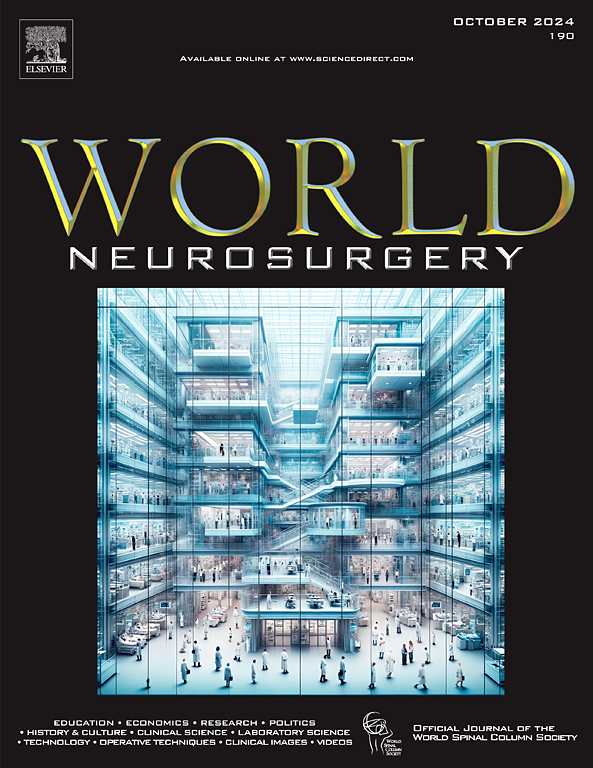C1–2 Stenosis Caused by Posterior Osteophytes: An Unusual Cause of Cord Compression
IF 1.9
4区 医学
Q3 CLINICAL NEUROLOGY
引用次数: 0
Abstract
Cervical spinal stenosis most commonly occurs at the subaxial spine. C1–C2 stenosis is relatively unusual but can be present in certain congenital or syndromic conditions such as rheumatoid arthritis. In this manuscript, we highlight the case of a 42-year-old lady who presented with neck pain and signs of high cervical myelopathy. Imaging studies showed severe stenosis at C1–C2 caused by posterior osteophytes originating from the C1 arch and C2 lamina. Decompression and stabilization of the segment were performed. This case is unique as this pathology occurred at an uncommon location, leading to an unusual degree of compression and resulting in surgical intervention.
后方骨质增生引起的 C1-2 狭窄:导致脊髓受压的不寻常原因。
颈椎椎管狭窄最常发生在轴下脊柱。C1-C2 狭窄相对来说并不常见,但在某些先天性或合并症(如类风湿性关节炎)中可能会出现。在本手稿中,我们重点介绍了一位 42 岁女士的病例,她出现颈部疼痛和高位颈椎病的症状。影像学检查显示,C1-C2 颈椎严重狭窄,原因是源自 C1 弓和 C2 椎板的后方骨质增生。对该节段进行了减压和稳定治疗。该病例非常独特,因为病变发生的位置并不常见,导致的压迫程度也不寻常,因此需要进行手术干预。
本文章由计算机程序翻译,如有差异,请以英文原文为准。
求助全文
约1分钟内获得全文
求助全文
来源期刊

World neurosurgery
CLINICAL NEUROLOGY-SURGERY
CiteScore
3.90
自引率
15.00%
发文量
1765
审稿时长
47 days
期刊介绍:
World Neurosurgery has an open access mirror journal World Neurosurgery: X, sharing the same aims and scope, editorial team, submission system and rigorous peer review.
The journal''s mission is to:
-To provide a first-class international forum and a 2-way conduit for dialogue that is relevant to neurosurgeons and providers who care for neurosurgery patients. The categories of the exchanged information include clinical and basic science, as well as global information that provide social, political, educational, economic, cultural or societal insights and knowledge that are of significance and relevance to worldwide neurosurgery patient care.
-To act as a primary intellectual catalyst for the stimulation of creativity, the creation of new knowledge, and the enhancement of quality neurosurgical care worldwide.
-To provide a forum for communication that enriches the lives of all neurosurgeons and their colleagues; and, in so doing, enriches the lives of their patients.
Topics to be addressed in World Neurosurgery include: EDUCATION, ECONOMICS, RESEARCH, POLITICS, HISTORY, CULTURE, CLINICAL SCIENCE, LABORATORY SCIENCE, TECHNOLOGY, OPERATIVE TECHNIQUES, CLINICAL IMAGES, VIDEOS
 求助内容:
求助内容: 应助结果提醒方式:
应助结果提醒方式:


